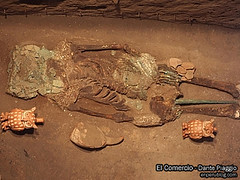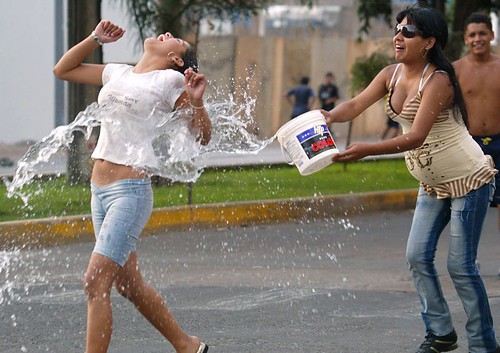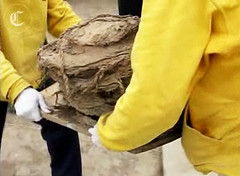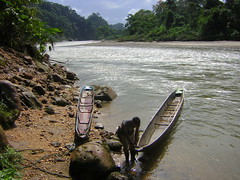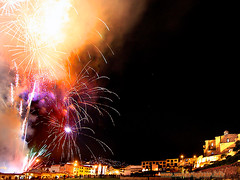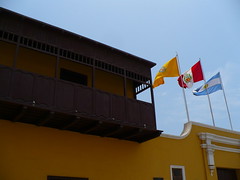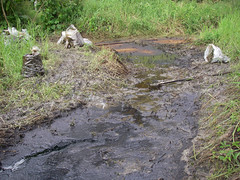This pretty little town in the Andes is different from all the others. It may be set among beautiful mountainous scenery like all the others, be populated by indigenous locals going about their daily business like all the others, be pleasantly quiet like all the…
Category: "History"
Ancient pre-Incan city discovered high above the Zaña river
Located between the Peruvian regions of Lambayeque and Cajamarca, the ancient site, according to famed archaeologist Walter Alva, appears to be shrouded in vegetation.
Peruvian archaeologist Walter Alva, the man who has made some of the most prominent archaeological discoveries in the past decades such as the world-headlining remains of the Lord of Sipán, has received word of an exciting new discovery in the mountains of the same region.
Housewives restore walls of ancient Chan Chan
The ancient capital of the Chimor Kingdom, the grand city of Chan Chan, has been in the news recently for all the wrong reasons. After 500 years of abandonment in the desert outside Trujillo, it has been damaged by 500 yearly rains that have washed away large parts of the walls of the adobe city. Restoration has been under way for years, but with limited resources it is a slow process. The site needs all the help it can get to avoid deteriorating more – that’s where the housewives come in.
Tacna’s double independence celebrations
For Peru’s southern-most region of Tacna, independence celebrations last twice as long as in the rest of the country. For it was this region that gained its freedom twice, the first time from the Spanish, and the second time from Chilean oppression.
Terraces of Moray
Some say Moray was an Inca laboratory used to test how different crops would perform at different temperatures. Others say it was a more of a nursery where crops were bred and cross-bred, varieties created and new foreign crops tested. A third group say it was just an ingenious means to grow warmer climate maíz or corn in the local cold climate. Whoever is right, this archaeological site of concentric circles of terraced farms, forming craters in the landscape, are a fascinating sight to behold.
The revolt of Túpac Amaru II
Born José Gabriel Condorcanqui in 1742, he was the great-grandson of the last Inca emperor Túpac Amaru. Like his great-grandfather before him, he was destined to resist the Spanish occupation, and, like his great-grandfather before him, was destined to meet the same fate.
Across from Ollantaytambo
When I first visited the ruins of Ollantaytambo, I saw the Inca store houses up on the other side of the valley across the town. There’s no way I could have climbed up there back then, I was just too exhausted. I figured I’d visit them “next time”, whenever that would be. A couple of years passed, and “next time” finally came.
Inca Pisaqa – The ruins of Pisac
High above the colonial market town of Pisac, today the gateway for many tourists to the Sacred Valley, are some of the finest Inca ruins in existence. They might not be in a location quite as beautiful as Machu Picchu, or on a scale quite as monumental as Sacsayhuamán, but the stonework here is some of the best you will ever see in Peru or elsewhere. Spanning about a kilometre or two along a mountain ridge at 3250 metres above sea level, its sections are separated by natural terrain but accessible by paths and tunnels. As you march from one urban area to another along these paths, with steep drops all the way, you can’t help but be awestruck by it all.
Hatunrumiyoc and the Twelve Angle Stone
The origins of the magnificent ruins of a building that we call Hatunrumiyoc are lost in time. Built with huge polygonal stones, cut and fitted with exceptional precision, it is one of the most impressive structures of ancient Cusco. Its imposing walls hide a number of surprises, from the famous 12-Angle Stone, to shapes of local animals built into the structure itself.
Surprising water engineering at Machu Picchu
The management and distribution of water in Machu Picchu is one example of the notable hydraulic engineering of the Incas and from those more ancient cultures who’s knowledge they inherited and expanded upon.
Chan Chan under constant threat
Only 5 of the 134 projects of the nine-year-old so called “master plan” have been executed to date, Repeated illegal land invasions by locals one of the principle problems for the ancient site. Chan Chan, the ancient capital city of the Chimú, was declared a UNESCO World Heritage site in 1986 because of its extraordinary architectural and historical importance. Unfortunately, the list World Heritage sites isn’t the only UNESCO list it is on.
Unlocking the secrets of the Quipus
Gary Urton. The investigator from Harvard University reveals the latest results of his investigations of the meaning of the quipu.
As I explained in this previous post, the quipu (or khipu) is a fascinating communication device used in the pre-Columbian world for everything from accounting and record keeping to, it is believed, recording detailed text… names, words, a full written language not in symbols but in lengths of string and knots tied at points along them.



